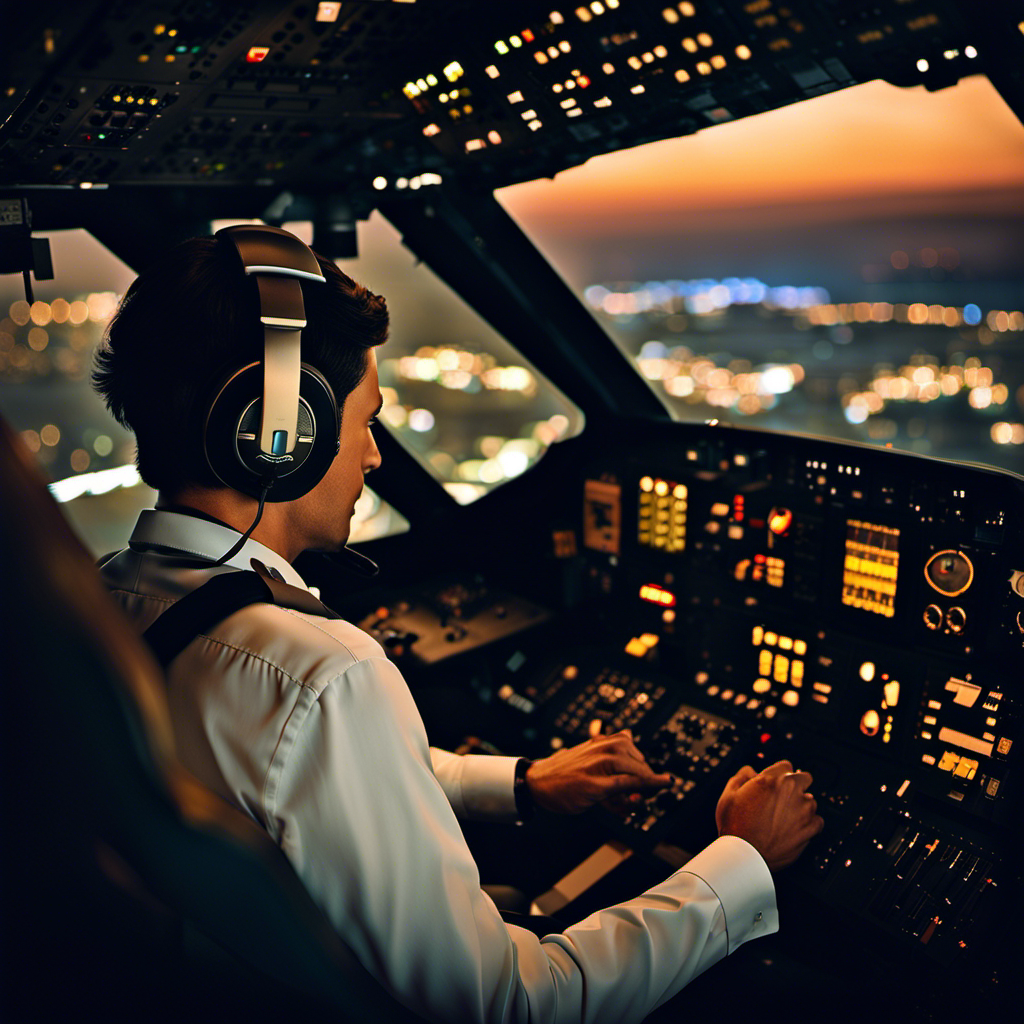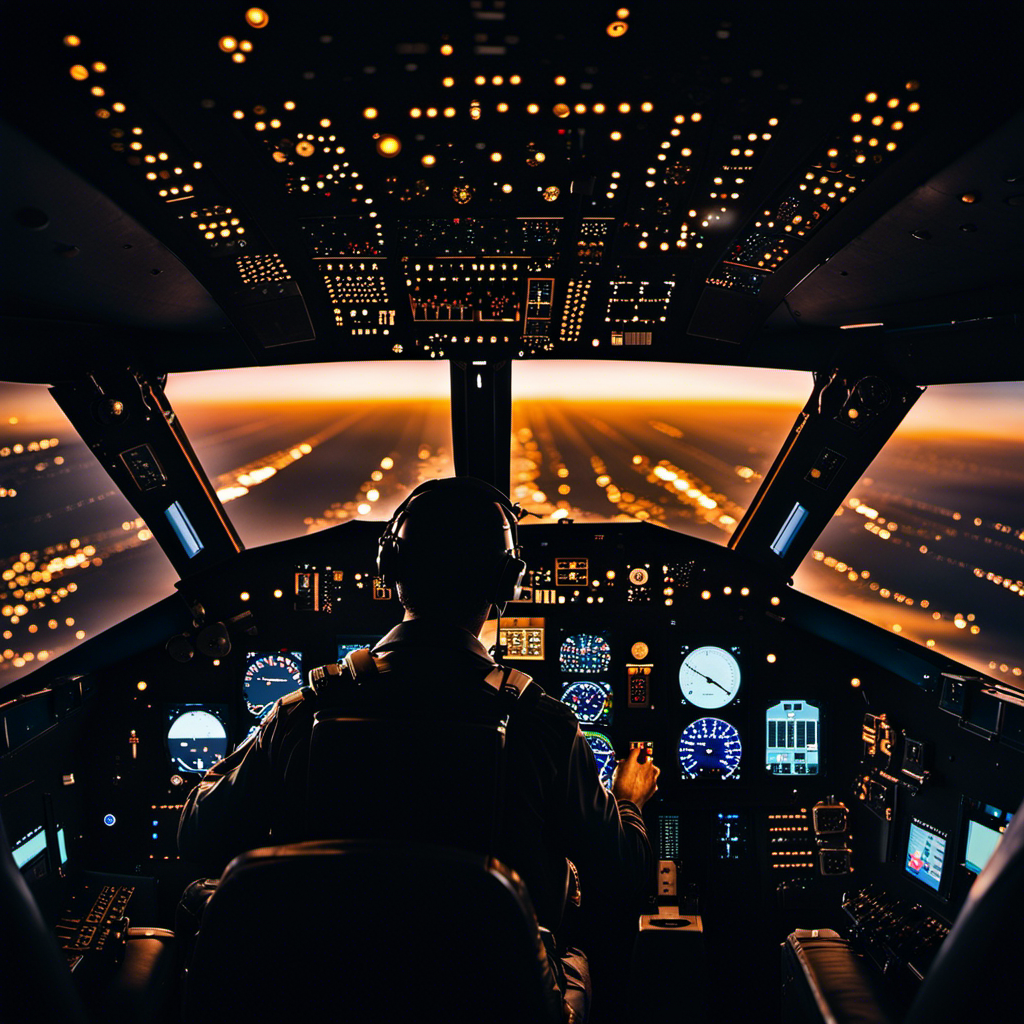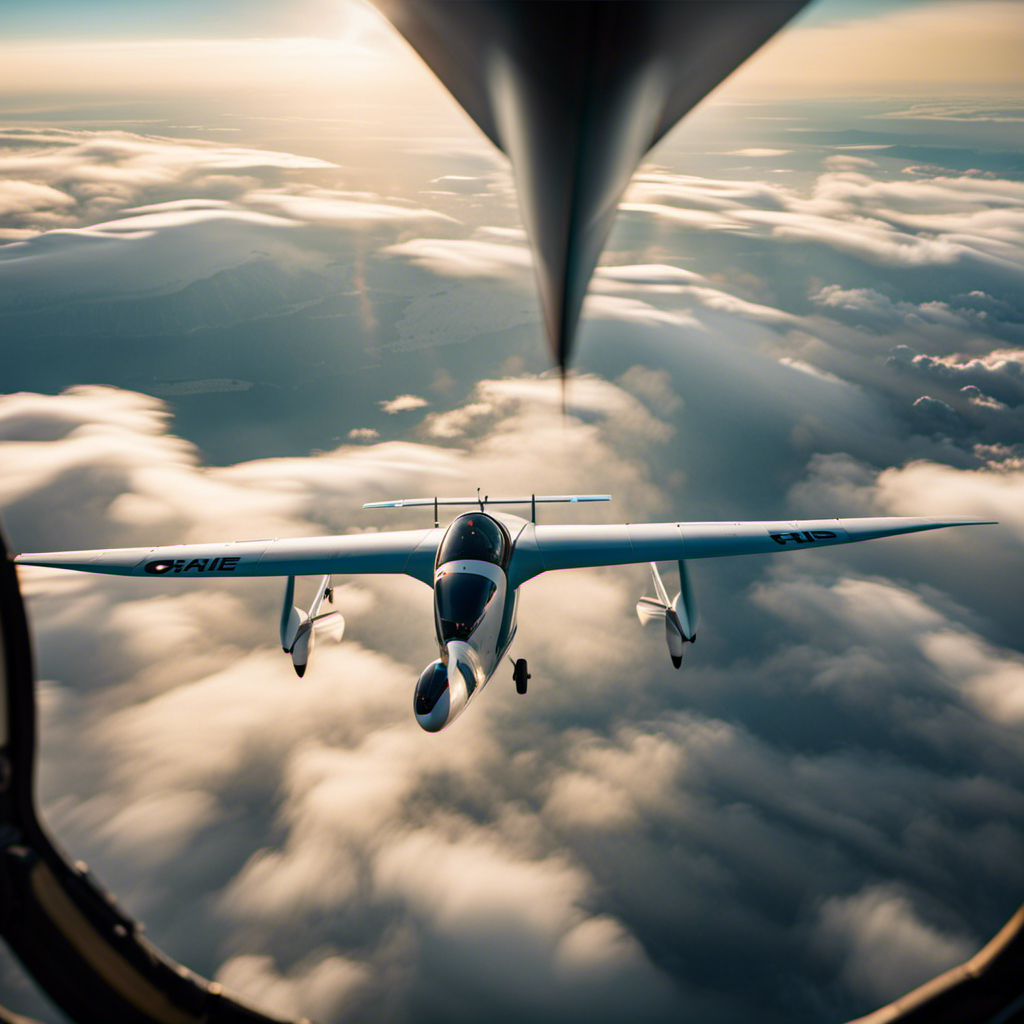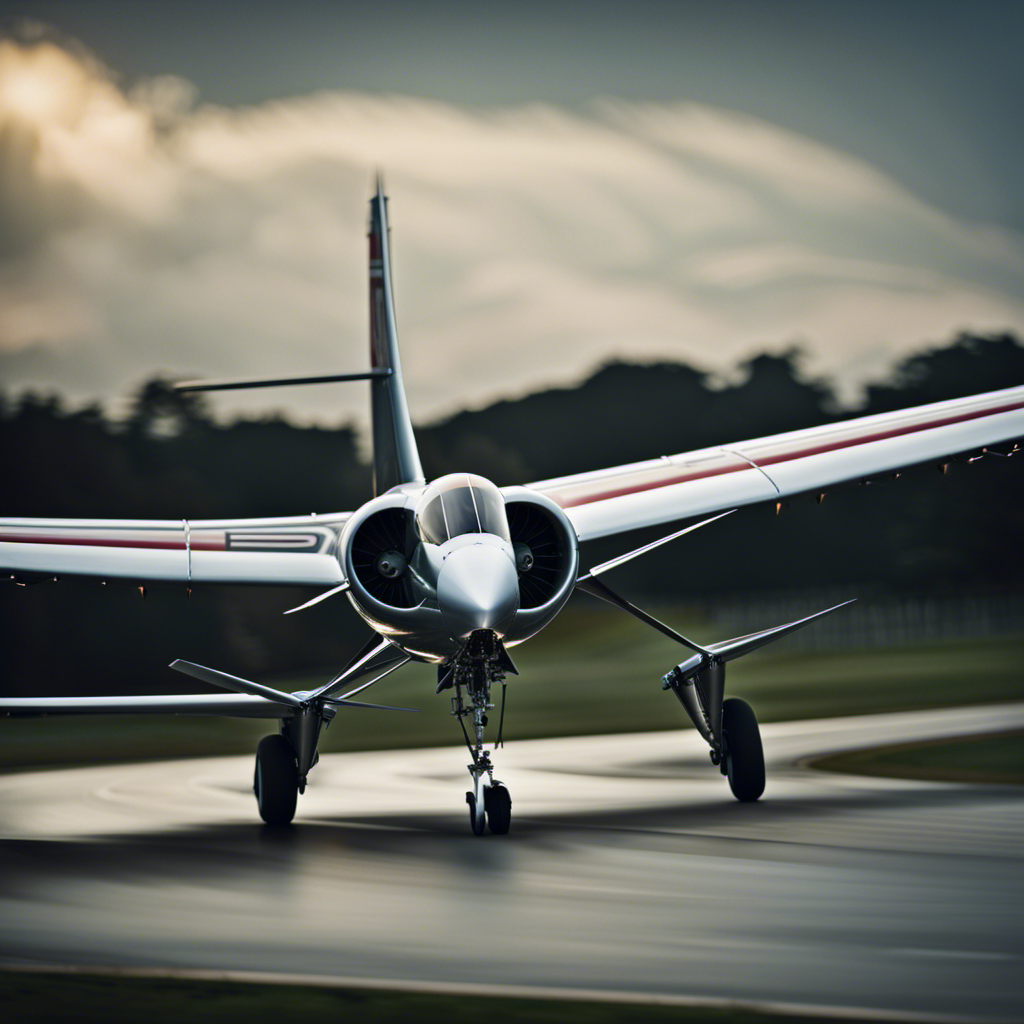As the old adage goes, ‘The weary get no rest.’ Yet for pilots, rest is not just a luxury; it is a crucial aspect of their responsibilities. Therefore, is it feasible for a pilot to sleep during a flight? In this piece, I will delve into the intricacies of rest and fatigue management for pilots.
We will explore regulations and guidelines for in-flight rest, the role of co-pilots, and the impact of restful sleep on aviation safety.
Join me as we unravel the complexities of in-flight sleep for pilots.
Key Takeaways
- Rest is crucial for pilots’ job performance and safety.
- Compliance with aviation authorities’ crew rest requirements is essential.
- Traveling across time zones disrupts circadian rhythms and can lead to jet lag.
- Co-pilots play a crucial role in maintaining flight safety and monitoring pilot rest periods.
The Importance of Pilot Rest and Fatigue Management
Ensuring pilot rest and managing fatigue is crucial for maintaining safety during flights. As a pilot, I understand the importance of adequate rest and the risks associated with sleep deprivation.
Pilots have unique sleep patterns due to irregular work schedules and long-haul flights crossing multiple time zones. This can disrupt the body’s natural sleep-wake cycle, leading to fatigue and impaired performance. Sleep deprivation not only affects cognitive functions such as attention and decision-making but also increases the likelihood of errors and accidents.
Therefore, it is essential for pilots to prioritize rest and implement strategies to mitigate fatigue.
In the next section, I will discuss the regulations and guidelines for in-flight rest, which play a significant role in promoting pilot well-being and ensuring safe operations.
Regulations and Guidelines for In-Flight Rest
To ensure your safety, it’s important to be aware of the regulations and guidelines for resting during a flight. Compliance with these regulations is crucial for pilots to avoid fatigue and maintain optimal performance. The duration of sleep recommended for pilots varies depending on the length of the flight and the time of day. Here is a summary of the regulations and sleep duration recommendations for in-flight rest:
| Regulations Compliance | Sleep Duration Recommendations |
|---|---|
| Follow crew rest requirements as per aviation authorities | Aim for a minimum of 3 hours of sleep during long-haul flights |
| Adhere to duty and rest period limitations | Take short power naps of 20-30 minutes during shorter flights |
| Use fatigue risk management systems | Avoid exceeding 9 hours of sleep during overnight flights |
Understanding these regulations and guidelines is essential to ensure pilots get adequate rest during flights. This rest is crucial for managing fatigue and preventing the negative effects of sleep deprivation, such as impaired performance and increased risk of errors. Transitioning from regulations and guidelines, it is important to also understand circadian rhythms and how they can be affected by long flights, leading to jet lag.
Understanding Circadian Rhythms and Jet Lag
Understanding circadian rhythms and the impact of long flights on them is crucial for managing jet lag. Circadian rhythms are internal biological processes that regulate various physiological functions, such as sleep-wake cycles and hormone production, over a 24-hour period.
Traveling across time zones can disrupt these rhythms, leading to circadian rhythm disruptions and sleep disorders like jet lag. Jet lag can cause symptoms such as fatigue, insomnia, and difficulty concentrating, which can impair a pilot’s performance and safety.
To mitigate the effects of jet lag, pilots can follow strategies such as adjusting sleep schedules before traveling, staying hydrated, and exposing themselves to natural light at the destination.
By understanding how circadian rhythms are affected by long flights and implementing appropriate measures, pilots can better manage jet lag and ensure their optimal performance.
This knowledge is crucial for the role of co-pilots and crew resource management in maintaining flight safety.
The Role of Co-Pilots and Crew Resource Management
As a co-pilot, you play a crucial role in maintaining flight safety through effective crew resource management. This includes ensuring that the pilot gets adequate rest before and during the flight.
Pilot rest is a vital aspect of crew management, as fatigue can impair performance and decision-making abilities. As a co-pilot, you are responsible for monitoring the pilot’s rest periods and ensuring that they adhere to the regulations set by aviation authorities.
This involves coordinating with the pilot to schedule breaks and ensuring that they have enough time to rest between flights. By actively managing pilot rest, you contribute to a safer and more efficient operation.
Now, let’s delve into the topic of designated rest areas and sleeping arrangements without compromising flight safety.
Designated Rest Areas and Sleeping Arrangements
The designated rest areas and sleeping arrangements on aircraft provide co-pilots with a comfortable space to recharge during long flights. These areas are specifically designed to accommodate the needs of pilots when they need to rest and sleep during their duty time.
The sleeping arrangements usually consist of a sleeping berth or a lie-flat seat, equipped with a privacy curtain and comfortable bedding. These designated rest areas are strategically located within the aircraft, ensuring easy access for the crew while minimizing disruption to the passengers.
It is crucial for pilots to take advantage of these rest areas to manage their sleep and maintain optimal performance during flights. However, managing sleep deprivation and shift work is not just about having designated rest areas; it also involves implementing effective strategies to enhance sleep quality and minimize fatigue.
Managing Sleep Deprivation and Shift Work
Now that we understand the importance of designated rest areas and sleeping arrangements for pilots, let’s delve into the crucial aspect of managing sleep deprivation and shift work in the aviation industry.
As a pilot, our schedules can be demanding and unpredictable, often leading to sleep deprivation. Here are four important strategies to help us cope with the challenges of managing sleep deprivation and shift work:
-
Establish a consistent sleep routine: By going to bed and waking up at the same time every day, our bodies can develop a natural sleep-wake cycle.
-
Create a sleep-friendly environment: Ensuring a dark, quiet, and comfortable sleep environment can optimize our sleep quality and duration.
-
Practice relaxation techniques: Incorporating techniques such as deep breathing, meditation, or progressive muscle relaxation can help us unwind and promote better sleep.
-
Stay physically active: Regular exercise can reduce the symptoms of sleep deprivation and improve our overall sleep quality.
To optimize our sleep on a plane, let’s now explore strategies for napping and sleeping during flights.
Strategies for Napping and Sleeping on a Plane
To make the most of your rest on a plane, try utilizing strategies for napping and sleeping during flights.
There are several effective strategies for in-flight napping that can help you get the rest you need. First, choose a window seat so you can lean against the wall for support. This will help you stay in a more comfortable position. Additionally, bring a neck pillow and an eye mask to block out any light and noise. These tools can create a more conducive environment for sleep.
The benefits of in-flight sleep are numerous. Not only can it help you feel more refreshed upon arrival, but it can also reduce the effects of jet lag.
Transitioning to the next section about technology and tools for in-flight sleep, it’s important to explore the advancements that have been made in this area.
Technology and Tools for In-Flight Sleep
If you want to enhance your in-flight sleep experience, consider trying out the latest technology and tools available. Technology advancements have led to the development of innovative sleep aids specifically designed for air travel. These sleep aids are designed to provide maximum comfort and relaxation, allowing you to get the rest you need while flying.
One popular sleep aid is the inflatable neck pillow, which provides support for your neck and head, preventing them from rolling or drooping during sleep. Another useful tool is the noise-canceling headphones, which block out the ambient noise of the aircraft, creating a peaceful environment for sleep. Additionally, eye masks with adjustable straps are great for blocking out light and promoting deep sleep.
By utilizing these technology advancements and sleep aids, you can significantly improve your in-flight sleep experience.
Transitioning into the subsequent section about balancing rest and responsibility in the cockpit, it is crucial for pilots to find the right balance between getting adequate rest and fulfilling their responsibilities while flying.
Balancing Rest and Responsibility in the Cockpit
Finding the right balance between getting enough rest and fulfilling responsibilities in the cockpit is crucial for maintaining safety and efficiency during flights. As a pilot, I understand the importance of managing pilot fatigue and combating sleep deprivation. Here are four strategies I employ to ensure I am well-rested and alert in the cockpit:
-
Establishing a consistent sleep schedule: I prioritize getting enough sleep by sticking to a regular sleep routine, even during layovers or days off.
-
Utilizing strategic napping: Taking short power naps of 20-30 minutes during breaks can help alleviate fatigue and improve cognitive performance.
-
Engaging in physical activity: Regular exercise helps improve overall sleep quality and increases alertness during waking hours.
-
Practicing good sleep hygiene: Creating a sleep-friendly environment with minimal distractions, comfortable bedding, and a cool temperature promotes better sleep quality.
By implementing these strategies, pilots can mitigate the effects of pilot fatigue and ensure their performance remains optimal.
Transitioning to the subsequent section, let’s explore the valuable insights gained from sleep studies and research on pilot performance.
Sleep Studies and Research on Pilot Performance
When it comes to studying sleep and researching pilot performance, you’ll discover valuable insights that can enhance your understanding of the relationship between rest and flying.
Sleep deprivation research has shown that lack of sleep can have a significant impact on pilot performance. Through pilot performance analysis, researchers have been able to identify the effects of sleep deprivation on cognitive functions, reaction times, and decision-making abilities.
These studies have provided crucial data that has led to the development of regulations and guidelines aimed at ensuring pilots get adequate rest before and during flights. By understanding the impact of sleep on pilot performance, aviation authorities can make informed decisions to promote safety in the skies.
As we explore the challenges and risks of in-flight sleep, it is essential to consider these research findings to develop effective strategies for managing pilot fatigue.
Challenges and Risks of In-Flight Sleep
As we delve into the challenges and risks of in-flight sleeping, it’s important to consider the potential consequences of inadequate rest for pilots. The dangers of sleep deprivation cannot be overstated, especially when it comes to flight safety.
Here are three strategies for managing fatigue and minimizing the risks associated with in-flight sleep:
-
Controlled rest periods: Pilots can take short naps during long-haul flights, allowing them to recharge and combat fatigue.
-
Crew resource management: Effective communication and teamwork among the flight crew can help identify signs of fatigue in pilots and prompt necessary action.
-
Sleep-friendly environments: Airlines can invest in comfortable sleeping facilities on long flights, providing pilots with a conducive atmosphere for rest.
By implementing these strategies, airlines can mitigate the dangers of sleep deprivation and ensure the well-being of their pilots.
Now, let’s explore the importance of training and education for pilot fatigue management.
Training and Education for Pilot Fatigue Management
Effective training and education are crucial in ensuring that pilots have the necessary knowledge and skills to manage and mitigate fatigue during flights. Pilot fatigue prevention and sleep deprivation management are essential components of this training.
Pilots must be educated on the physiological and psychological effects of sleep deprivation, as well as the strategies and techniques for maintaining alertness and combating fatigue while in the cockpit. They need to learn how to recognize the signs of fatigue in themselves and their crew members, and how to effectively communicate and make decisions in such situations.
Through comprehensive training programs, pilots can develop a deep understanding of the importance of restful sleep and the impact it has on aviation safety. By implementing these practices, pilots can enhance their ability to perform optimally and ensure the safety of their passengers and crew members.
The Impact of Restful Sleep on Aviation Safety
Now that we have discussed the importance of training and education for managing pilot fatigue, let’s delve into the impact of restful sleep on aviation safety.
As a pilot, ensuring adequate sleep is crucial for optimal performance and safety. Here are some key factors related to sleep and its influence on aviation:
- Pilot sleep deprivation can lead to impaired cognitive function and decreased alertness.
- Restful sleep helps restore the body and mind, enhancing overall well-being and performance.
- Quality sleep promotes better decision-making abilities and judgment during critical flight operations.
- Regular, sufficient sleep improves reaction times and decreases the risk of errors and accidents.
- Monitoring sleep patterns and implementing effective fatigue management strategies are essential for maintaining pilot alertness.
By understanding the significance of sleep quality and alertness, we can proactively address fatigue-related challenges in aviation.
Now, let’s explore the alarming reality of sleep-related incidents and accidents in aviation.
Sleep-Related Incidents and Accidents in Aviation
Getting enough restful sleep is crucial in aviation to prevent sleep-related incidents and accidents. As a pilot, I understand the importance of proper rest management to ensure my alertness and performance during flights.
Sleep-related incidents can occur when pilots experience fatigue or sleep deprivation, leading to impaired judgment and reaction times. By implementing effective pilot rest management programs, aviation authorities aim to mitigate the risk of these incidents. These programs include regulations on duty hours, rest periods, and mandatory sleep breaks.
Additionally, pilots are encouraged to practice good sleep hygiene, such as maintaining a regular sleep schedule and creating a conducive sleep environment. However, despite these measures, the complexities of in-flight sleep for pilots pose challenges that will be explored in the subsequent section.
Conclusion: The Complexities of In-Flight Sleep for Pilots
In-flight sleep poses unique challenges for pilots due to the complexities of the aviation environment and the demanding nature of their job. As pilots, we have to navigate through constantly changing weather conditions, air traffic, and other factors that require our full attention. Finding the right time to sleep during long flights can be a challenge, especially when we need to remain alert and ready to handle any unexpected situations.
Our sleep patterns can also be disrupted by irregular work schedules and time zone changes, further complicating our ability to get quality rest. It is crucial for pilots to prioritize sleep and establish effective strategies to manage fatigue, such as implementing controlled rest periods and practicing good sleep hygiene.
Frequently Asked Questions
What are the regulations and guidelines regarding pilot rest during flights?
Regulations and guidelines dictate pilot rest during flights. These rules ensure pilots receive adequate rest to maintain alertness and safety. Compliance with these regulations is crucial to prevent fatigue-related incidents and ensure the well-being of both passengers and crew.
How do circadian rhythms and jet lag affect pilot performance?
Circadian rhythms and jet lag can significantly impact pilot performance. Disruptions to the body’s internal clock can lead to fatigue, impaired alertness, and decreased cognitive function, affecting a pilot’s ability to safely operate an aircraft.
How do co-pilots and crew resource management contribute to pilot rest and fatigue management?
Cockpit communication and teamwork are essential for effective pilot rest and fatigue management. Crew resource management ensures that co-pilots work together to create a supportive environment, allowing for proper rest and minimizing fatigue-related risks.
What are the designated rest areas and sleeping arrangements for pilots during long flights?
During long flights, pilots have designated rest areas with sleeping arrangements. These areas are specifically designed to provide pilots with a comfortable and safe place to rest and recharge before their next duty period.
What strategies can pilots use to manage sleep deprivation and shift work?
Strategies and techniques to manage sleep deprivation and shift work include maintaining a consistent sleep schedule, taking strategic naps, practicing good sleep hygiene, staying hydrated, and using caffeine strategically.
Conclusion
In conclusion, the complexities of in-flight sleep for pilots cannot be underestimated.
As aviation safety relies heavily on well-rested and alert pilots, the management of pilot rest and fatigue is of utmost importance.
However, the question still lingers in the air: can a pilot truly sleep while flying?
The answer lies in the delicate balance between regulations, training, and understanding the impact of restful sleep on aviation safety.
Only by continuously striving for improvement in these areas can we ensure that pilots can effectively rest while soaring through the skies.









